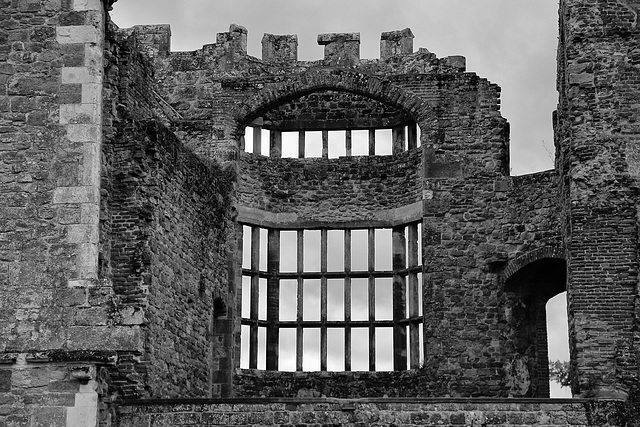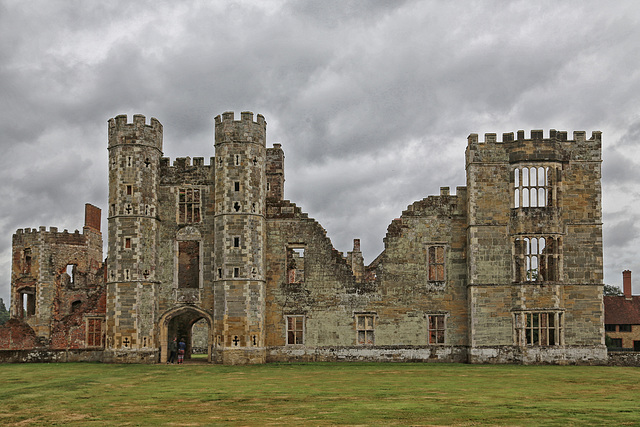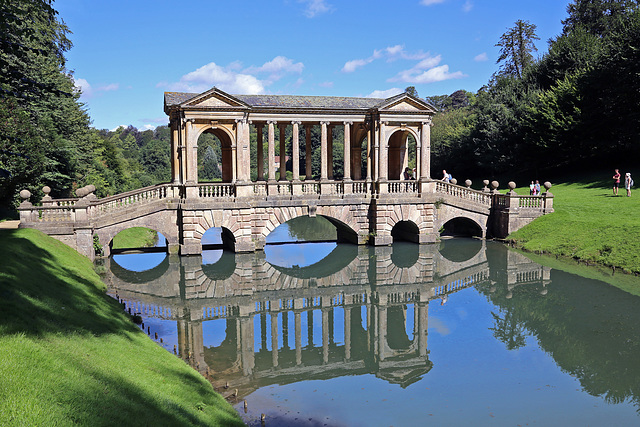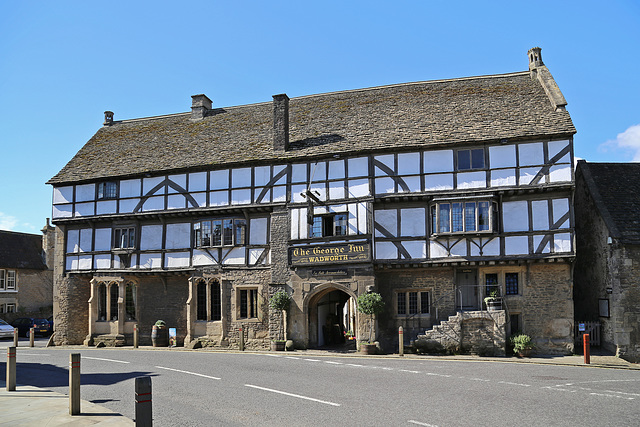
UK - Architecture
Tudor windows
Just a snap shot of the ruins in Cowdray Park near Midhurst
Ruins of a fortified Tudor mansion (2)
In Cowdray Park near Midhurst in West Sussex.
This great mansion was devastated by fire in 1793 and has remained more or less in the same state since. www.cowdray.co.uk/historic-cowdray/history
A 'Grade 1 listed' building.
Palladian Bridge in Prior Park, Bath
There are four almost identical surviving Palladian bridges of this size, designed by the Venetian architect Andrea Palladio (1508–1580). Three in England and one in Russia.
The Palladian Bridge at Prior Park in Bath was built in 1755 for Ralph Allen, and copied from the one at Wilton House near Salisbury (built 1735-37). This was the last of three of its kind built in England.
Grade 1 Listed since 1950.
Explored!
The George Inn at Norton St Philip
Situated at the junction of the A366 with the B3110 close to the A36 road and approx. 7 miles from the Somerset city of Bath, the inn was built in the 14th or 15th century and and is now a Grade I listed building . The establishment claims that it is the oldest tavern in England but as yet they have not provided any photos of the era to verify this.
[At least 10 other establishments lay claim to being the oldest pub in the country!]
In the year 1226 the monks from Hinton Priory at nearby Hinton Charterhouse, petitioned the landowner, the Countess of Salisbury, for a new site to achieve greater solitude. She gave them her manors of Hinton Charterhouse and Norton St Philip and a new house was consecrated at Hinton Charterhouse in May 1232. A licence to sell alcohol here at what is now The George is claimed from 1397... which may have only been a local licence from the Prior of Hinton Priory as Governmental licences for providing alcohol were only introduced in 1552.
The timber-framed upper floors were added In the 15th century.
The inn became a regular part of the stage coach route between London and South West England. It was also used as the headquarters of Monmouth's army, during the Monmouth Rebellion in 1685, after his retreat from Bath. In the aftermath of the failed rebellion Judge Jefferies used the George Inn as a courtroom and conducted 12 executions on the village common, as part of the Bloody Assizes.
Explored!
Jump to top
RSS feed- Latest items - Subscribe to the latest items added to this album
- ipernity © 2007-2024
- Help & Contact
|
Club news
|
About ipernity
|
History |
ipernity Club & Prices |
Guide of good conduct
Donate | Group guidelines | Privacy policy | Terms of use | Statutes | In memoria -
Facebook
Twitter





